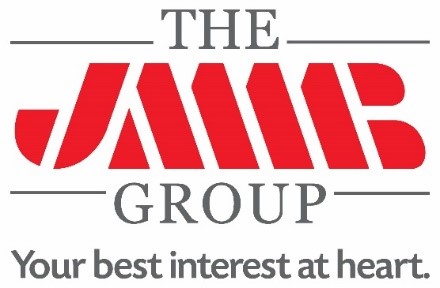BATAVIA, Ohio (AdAge.com) — Bob Wolinsky calls it “the taint.”
He means the residue of doubt spawned by decades of in-store TV ventures that never delivered as planned, despite the seemingly unbeatable premise of putting TV ads in front of shoppers just as they’re deciding whether to buy.
Walmart built screens directly into end-cap displays and customized messages by section.
Mr. Wolinsky heads the latest foray into in-store TV, Automated Services, set to launch a test of its 3GTV network in nine Bloom stores around Washington, D.C., later this month. But, he acknowledges, “the taint is so devastating that it makes it very difficult to engage someone in an open conversation” about in-store TV.
He believes he’s solved problems that dogged prior in-store TV ventures. His solutions include a yet-to-be-revealed content approach he likens to “short attention-span theater,” cheaper technology for wiring stores and systems that ensure ads actually get delivered to screens and monitor shopper flow through the store.
But “the taint” has caught up to bigger and better-funded players than Mr. Wolinsky. While most in the industry blame poor execution, some are questioning the concept.
The biggest and most recent bold plan came two years ago, when behemoth Walmart joined its longtime in-store TV partner PRN, analytics firm DS-IQ and media shop Starcom Mediavest Group to launch the Walmart Smart Network.
The new network addressed prior shortcomings with Walmart TV by building screens directly into end-cap displays, customizing messages by store and section, measuring response and refining messages based on sales.
Walmart expected to deploy the upgraded network in all its stores by early this year. That didn’t happen, and it’s not yet clear when it will.
A spokeswoman for Walmart said in a statement the network is in 1,200 stores (well under the 2,700 targeted two years ago) and continues to be installed in new stores. She added the retailer is “encouraged by increasing advertiser interest.” Walmart realizes in-store messages need to be shorter and focused on finding new products and is focusing on such innovations as weather-triggered campaigns, mobile integrations and Spanish-language ads, she said, adding: “We are seeing well-designed and thoughtful campaigns successfully drive and lift impressions.”
———————————————————————————————————-

ADVERTISEMENT : CARIBIZTECH will be exploring the ways technology and new technology paradigms are radically transforming the way SME businesses function and are giving rise to new business models
———————————————————————————————————————–
Late last year, the parent company of PRN, primary operator of the Walmart Smart Network and Walmart’s older in-store TV network among those at several other retailers, filed for bankruptcy. Though PRN wasn’t apparently the cause, Paris-based Technicolor has been trying unsuccessfully to sell the unit as part of its restructuring plan, including after emerging from bankruptcy earlier this year.
But PRN CEO Richard Fisher said his business has posted a profit consistently for 10 years, including the first half of this year. He said only Walmart can say why the Smart Network has rolled out slower than planned, but noted that many new ventures have been slowed by the recession, which intensified just as the Smart Network was launching. He blamed delays in selling PRN on Technicolor’s determination to get fair value.
Mr. Fisher acknowledged in-store TV’s image problem, but has a different take on “the taint.” The perception of failure has been fueled, he said, by startups — he counts about a dozen — who burned through venture capital and investor patience long before they reach the scale to be meaningful to national advertisers.
That’s not PRN’s problem, Mr. Fisher said. With 206 million monthly consumers reached, per Nielsen data, it’s bigger than the next nine in-store video players combined, he said.
Another problem is the very term “in-store TV,” Mr. Fisher said. Though PRN has used it in the past, he prefers “retail media,” a reflection that it’s not about conventional TV commercials in store and can incorporate other types of digital communication.
Peter Hoyt, exec director of the In-Store Marketing Institute trade group, pegs in-store TV’s failure on two reasons.
First, wiring any retailer for TV is expensive, he said, and the investment costs are likely to be too steep to be recouped by advertising sales.
Second, he said, “Nobody’s really cracked the code on the content. Nobody ever went to a store to watch a commercial, so if you’re looking to put a 15- or 30-second spot on your in-store TV, it will fail.”
PRN and others have run ads ranging from two to eight seconds for in-store TV, but they’re not without creative challenges. The obstacles that make 15-second ads difficult get bigger still when cutting the time down even more.
At best, marketers can convey a quick offer with the time they have on TV in store, said a longtime shopper-marketing-agency executive, and such messages can be conveyed cheaper through circulars or shelf ads.
Could it just be that TV in stores, good as it always sounded, is a bad idea? Mr. Hoyt finds it “very telling” that News Corp. Chairman-CEO Rupert Murdoch, who knows plenty about TV and owns the largest U.S. in-store media network — NewsAmerica Marketing — has never pushed in-store TV.
He does, however, see in-store TV working under the right circumstances — look at Checkout TV (another PRN product) and Gas Station TV at pumps. Both rely on longer-form ads and temporarily captive audiences, though they work much more like in-home TV and aren’t positioned to drive many impulse sales, he said.
Mr. Wolinsky is banking on better execution to make the difference.
Beyond TV, in-store digital applications are growing in number and apparently impact.
Carmen Bauza, Walmart’s VP-divisional merchandise manager of beauty, spoke glowingly last week at the HBA Global Expo in New York about EZFace, a digital kiosk now used in about 50 Walmart stores that photographs a woman’s face then shows simulations of it with various cosmetics shades. Stop & Shop has had success with Modiv hand-held units that interface with loyalty-card data to generate offers and streamline checkout by letting customers scan their own purchases in the aisles. And a person familiar with the matter says Modiv is preparing to launch an iPhone app that can do the same thing.
Meanwhile, Mr. Hoyt contends the bulk of shopper marketing tech development today is screens on shoppers’ own mobile devices, not in-store TV.
http://adage.com/article?article_id=146257

 Businessuite News24 International2 years ago
Businessuite News24 International2 years ago
 Feedback & What You Think2 years ago
Feedback & What You Think2 years ago
 Marketing & Advertising2 years ago
Marketing & Advertising2 years ago
 Businessuite Women1 year ago
Businessuite Women1 year ago
 Businessuite 50 Power and Influence1 year ago
Businessuite 50 Power and Influence1 year ago
 Leadership Conversations1 year ago
Leadership Conversations1 year ago
 Businessuite Markets2 years ago
Businessuite Markets2 years ago
 RANKING7 months ago
RANKING7 months ago









